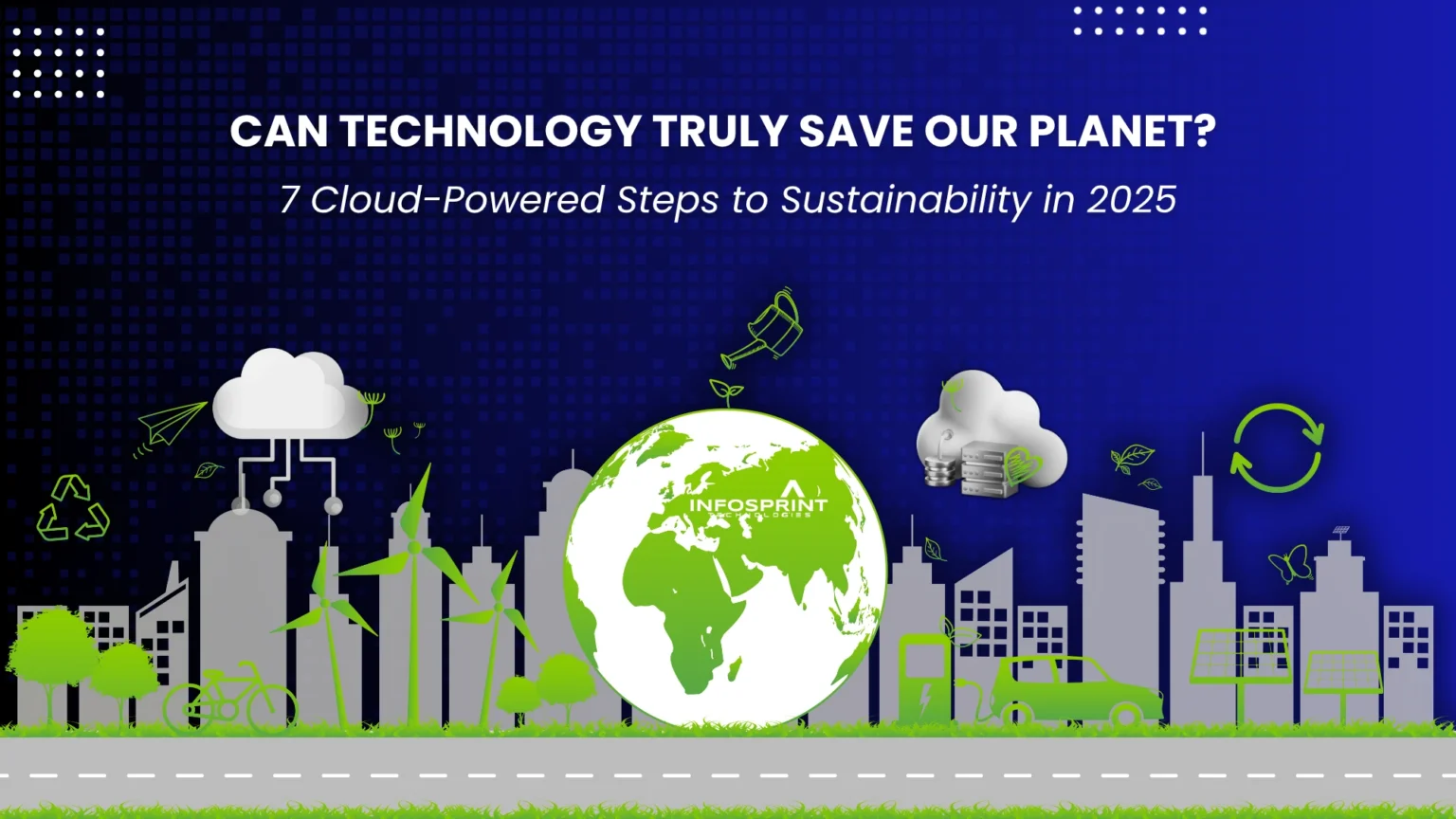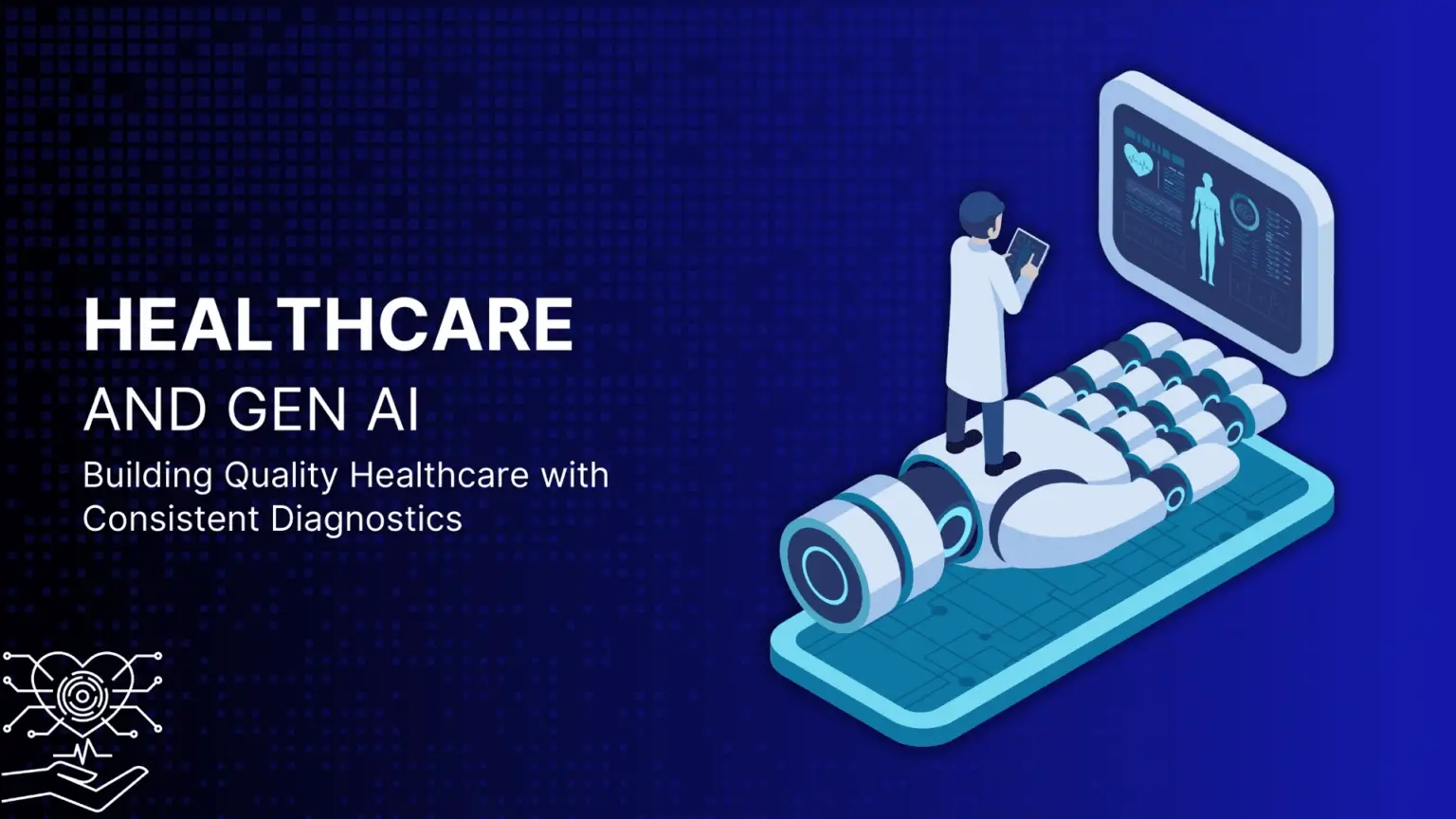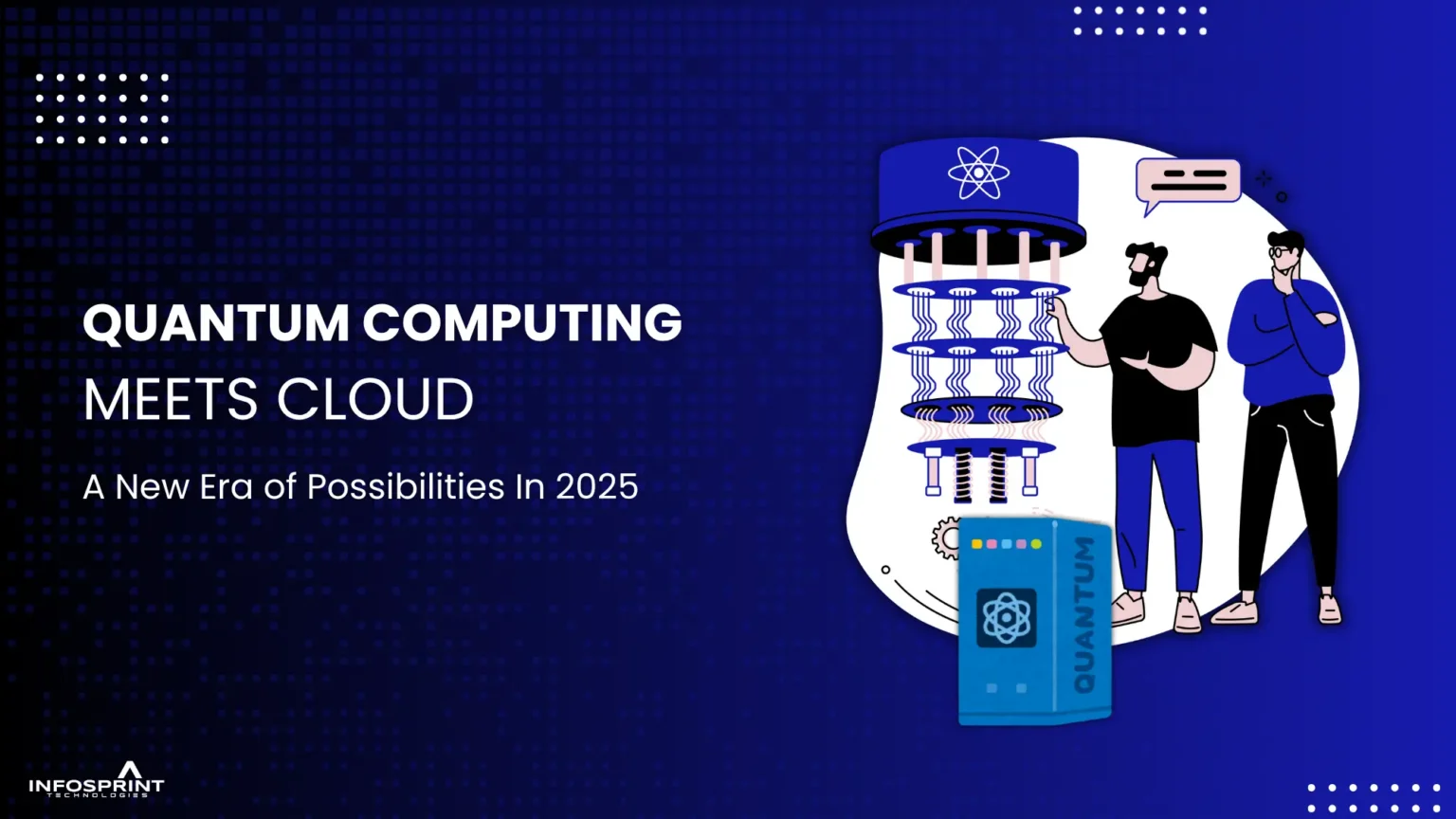Top 10 Cloud Computing Technologies to Look Out for in 2025

On this Page
- Top 10 Cloud Computing Technologies to Look Out for in 2025
- Hyperconnected Cloud Ecosystems: The Future of Business
- Blockchain: The Foundation for Trust and Transparency
- Harnessing the Power of AI and ML
- Adopting Cloud-Native Technologies
- Building a Sustainable Digital Future: Green cloud computing
- Fortifying the Cloud: Robust Security Solutions
- The Dynamic Duo: Blockchain and Cloud
- Mastering Hybrid and Multi-Cloud Environments
- Edge Computing: The Future of Real-Time Applications
- A Roadmap to Success in 2025 and Beyond
Top 10 Cloud Computing Technologies to Look Out for in 2025
Cloud computing technology is a fast-paced industry with emerging trends, improved innovations, and adopting technologies to the competitive landscape. Your business must look for and adapt to emerging cloud computing trends to gain a competitive advantage in the hypercompetitive market. Infosprint Technologies has delved deep into cloud trends and cloud computing services to identify technologies that will reshape business operations and beyond. In this blog, we’ll explore the top cloud computing technologies to watch in 2025, delving into their potential impacts and how they could transform the tech landscape.
“There are no winners or losers in every competition, only learners. – Brian Herbert”
1. Hyperconnected Cloud Ecosystems: The Future of Business
Hyperconnected cloud ecosystems promise to revolutionize how businesses operate by seamlessly integrating various cloud services and applications. Simply put, it’s a world in which everything is interconnected and has the potential to innovate, become more efficient, and open up new possibilities.
Transformative capabilities
- Enhanced Efficiency: Streamlined workflows and automated processes leading to increased productivity.
- Data-Driven Insights: Real-time access to data from multiple sources for informed decision-making.
- Scalability and Flexibility: Ability to adapt to changing business needs rapidly.
- Innovation Boost: A fertile ground for developing new products and services.
Why We Must Look Out for 2025
2025 is a critical juncture for the maturation of hyperconnected cloud ecosystems. We can anticipate:
- Widespread Adoption: Increased number of businesses leveraging these ecosystems.
- Standardized Frameworks: Emergence of common standards for interoperability.
- Security Challenges: New threats and vulnerabilities to address.
- Competitive Advantage: Early adopters gain a significant edge over competitors.
Understanding and preparing for these developments is essential for businesses to thrive in the digital age.
Quantum Computing as a Service (QCaaS)
Quantum computing services an advanced theory incorporating quantum mechanics to process information in ways classical computers cannot, solving complex problems exponentially faster. A proven cloud computing theory that will be visualized by 2025. This technology could lead to breakthroughs in areas previously deemed impossible, driving economic growth and societal advancements.
Economical Impacts of QCaaS by 2025
- Economic transformation: Emerging quantum-based new industries with new job opportunities
- Economic growth: Increased innovations and complex solving problems pushing economic growth.
- Competitive advantage: Early adopters will be leading the market from their competitors.
Why We Must Be Lookout for 2025
While still in its nascent stages, QCaaS is rapidly evolving. Experts predict that by 2025, we could witness significant strides in quantum error correction and algorithm development. This progress will bring QCaaS closer to commercial viability, making it essential for businesses and researchers to stay informed about its potential applications and implications.
Early adoption of QCaaS can provide a competitive edge, allowing organizations to harness the power of quantum computing without the significant upfront investment required for building in-house quantum infrastructure.
Blockchain: The Foundation for Trust and Transparency
By 2025, blockchain and cloud computing technology, renowned for its decentralized and immutable ledger capabilities, will be increasingly integrated. As a result of this merger, there will be more chances for efficiency, openness, and data security.
Blockchain and Cloud: A Transformative Partnership
- Transparency and trust: Transparent transactions and record-keeping builds trust with stakeholders.
- Cost reduction: Streamlined processes and reduced intermediaries lead to cost savings.
- New business models: Integrating blockchain with the cloud creates new business models and new revenue generation opportunities for innovative businesses.
Why We Must Be on the Lookout in 2025
- Improved Data Integrity: Applications needing transparency and security depend on data integrity and traceability, which blockchain integration can guarantee.
- Decentralized Applications: The creation of decentralized applications (dApps), which go beyond cryptocurrency use cases, will be made possible by cloud-based blockchain platforms.
- Smart Contracts: By automating and streamlining complicated business procedures, smart contracts on cloud platforms will eliminate the need for middlemen.
Harnessing the Power of AI and ML
The convergence of artificial intelligence (AI) and machine learning (ML) is set to transform industries by enabling enhanced decision-making through advanced data analysis, cloud-automating routine tasks to free up human resources for more strategic activities, and significantly improving customer experiences with AI-driven chatbots and personalized recommendations. Moreover, this integration is expected to foster innovative business models and new revenue streams, driving unprecedented innovation and operational efficiency across various sectors.
The Catalyst for a New Era of Business
- Increased efficiency: Quick decision-making process with the help of AI and ML data analysis.
- Economic growth: The development of AI and ML fosters economic growth with increasing opportunities in new markets.
- Job displacement and creation: Automation of routine tasks will create job displacement in some sectors and new jobs in AI collaboration and data science.
Why We Must Be on the Lookout in 2025
The pace of development in AI and ML is accelerating rapidly. By 2025, we expect widespread adoption of these technologies, leading to significant disruptions in various sectors. Organizations must adapt to this evolving landscape to avoid falling behind their competitors.
To stay ahead of the curve, businesses must invest in AI and ML research, develop talent, and explore potential industry applications.
Adopting Cloud-Native Technologies
Cloud-native technologies, like containerization, microservices, and DevOps, are methods and tools created to take full advantage of cloud solutions. These technologies will keep developing by 2025, encouraging more agile software development.
Possible Effects
- Faster Development Cycles: By using cloud-native techniques, development and deployment cycles will be sped up, allowing for the quicker release of updates and new features.
- Better Scalability: Microservices and containerization will improve scalability, enabling applications to manage growing loads effectively.
- Enhanced Resilience: Cloud-native architectures will increase an application’s reliability by providing a stronger defence against errors.
Why We Must Be on the Lookout in 2025
Microservices and containerization are two examples of quickly developing cloud-native technologies that promise faster application development, better scalability, and increased robustness. Businesses must implement these technologies to create better customer experiences, maximize resources, accelerate innovation, reduce risks, and take advantage of new opportunities to remain competitive in 2025.
Building a Sustainable Digital Future: Green cloud computing
As we enter a sustainable era where conservative measures are encouraged, computer carbon emissions are at a peak. Top companies like Google and Microsoft are adapting to a sustainable future. Green cloud computing helps manufacture computers, chips, and other smart peripherals that don’t harm the planet. with an emphasis on reducing the environmental impact of data centres and cloud services.
The Rise of Green Cloud Computing
- Energy Efficiency: Cloud providers will invest in energy-efficient technologies and renewable energy sources to minimize their carbon footprint.
- Sustainable Practices: Businesses will adopt green cloud computing practices, such as optimizing resource usage and implementing eco-friendly data centre designs.
- Regulatory Compliance: As environmental regulations become stricter, cloud providers must ensure compliance with sustainability standards and certifications.
Why We Must Be on the Lookout in 2025
- Regulatory pressure: As the environmental pressure increases, businesses will need a sustainable method to comply with the regulations.
- Consumer demand: Consumers are self-conscious about green initiatives. Companies using environment-friendly solutions will gain the customer’s favour.
- Innovation: Innovation opportunities will rise due to the increasing pressure of creating renewable energy, energy-efficient hardware, and software optimization.
Fortifying the Cloud: Robust Security Solutions
Cyberattacks are ever more complex, and the threat landscape is always changing. Cloud-based attacks that target financial institutions, government organizations, and key infrastructure should increase by 2025. Organizations must invest in state-of-the-art security solutions and take a proactive risk management approach to guard against these risks.
Cloud Security Challenges
- Enhanced Data Protection: Advanced security solutions will safeguard sensitive data from breaches, ransomware attacks, and data loss.
- Improved Business Continuity: Robust cloud security measures will minimize downtime and financial losses due to cyber incidents.
- Increased Customer Trust: Commitment to cloud security will build customer confidence and loyalty.
- Compliance Adherence: Innovative security solutions will help organizations meet regulatory requirements and avoid hefty penalties.
Why We Must Be on the Lookout in 2025
- Complex cyber attacks: The sophisticated and frequent attacks on critical infrastructures, financial institutions, and government agencies are expected to escalate.
- Data Privacy Regulations: Adherence to stringent data privacy regulations will demand robust security measures to protect sensitive information.
- Business continuity: To safeguard against frequent cyber attacks, robust cloud security solutions are needed.
- Customer trust: Building strong customer trust with secure data and privacy protection.
The Dynamic Duo: Blockchain and Cloud
Blockchain is a distributed, decentralized database that enables safe information exchange between several parties. Integrating with cloud technology blockchain can build a decentralized network of nodes in cloud computing that exchange data and processing power. This enables businesses to get by without a single, centralized supplier. Alternatively, they can depend on a dispersed computer network not controlled by a single company.
Potential Impacts
- Improved Data Integrity: Applications needing transparency and security depend on data integrity and traceability, which blockchain integration can guarantee.
- Decentralized Applications: The creation of decentralized applications (dApps), which go beyond cryptocurrency use cases, will be made possible by cloud-based blockchain platforms.
Why We Must Be on the Lookout in 2025
- Matured blockchain platforms: This cloud-based blockchain makes it a more robust, user-friendly solution making it easier for the companies to adapt to the technology.
- New business model: With the integration of blockchain and cloud, a new strategic business model revolves around decentralization, trust, and transparency.
- Regulatory clarity: blockchain integrated with cloud computing will permanently change the government sector by providing clear regulation on cryptocurrency and a more stable environment for business operations.
- Security enhancement: This technology will enhance the overall security posture of systems relying on these technologies.
Mastering Hybrid and Multi-Cloud Environments
Master Hybrid and multi-cloud environments to effectively manage the mix of public, private, and on-premise cloud. This requires understanding cloud differences, developing a strategic approach, overcoming challenges, and leveraging benefits to maximize business value and mitigate risks.
Potential Impacts
- Enhanced Flexibility and Scalability: Organizations can optimize resource utilization, scale applications seamlessly, and adapt to changing business needs.
- Improved Disaster Recovery: Enhancing resilience and minimizing downtime by sharing workloads across multiple cloud platforms.
- Optimized Cost Management: Leveraging the best pricing models from different cloud providers can lead to significant cost savings.
- Increased Innovation: Access to a wider range of services and technologies can foster experimentation and accelerate time-to-market.
Why We Must Be on the Lookout in 2025
The hybrid and multi-cloud computing landscape is changing quickly as new services and technologies are added regularly. Cloud complexity is predicted to rise significantly by 2025, necessitating the development of complicated management and governance plans by enterprises.
Businesses must invest in trained workers, use automation tools, and safeguard their cloud environments with strong security measures to remain competitive. Success also depends on creating successful migration plans and comprehending the subtleties of various cloud platforms.
Edge Computing: The Future of Real-Time Applications
By processing data closer to its source, edge computing avoids depending entirely on centralized data centres. By 2025, cloud services and edge computing integration will be more commonplace, resolving latency and bandwidth problems related to cloud processing.
Possible Effects
- Real-Time Data Processing: Edge computing will help with real-time data processing for applications like industrial IoT, smart cities, and autonomous cars that need quick answers.
- Enhanced Efficiency: Cloud providers can lessen the stress on central servers by shifting processing to edge devices, which results in more economical and efficient use of resources.
- Enhanced Security and Privacy: Processing data locally can guarantee adherence to data sovereignty laws and lower the chance of data breaches.
Why We Must Be on the Lookout in 2025
Edge computing can change how data is handled and examined completely. We anticipate a massive increase in IoT devices by 2025, producing enormous amounts of data and making edge computing an essential technology. Improved application performance, lower latency, and quicker response times will result from its capacity to process data closer to the source. Edge computing will majorly advance efficiency and innovation in industries including healthcare, manufacturing, and the automotive industry. The potential of edge computing will increase with the expansion of 5G networks, opening up new avenues for individuals and enterprises.
A Roadmap to Success in 2025 and Beyond
The cloud computing landscape is expected to be dynamic and revolutionary by 2025. These technologies will spur innovation, efficiency, and new business prospects for companies in various industries. Examples of these technologies include edge computing, quantum computing, AI integration, and green cloud projects. In an ever-changing digital landscape, firms looking to capitalize on these developments and preserve a competitive advantage must be knowledgeable and flexible. Adopting these trends will help firms succeed in the cloud computing future while also improving operational skills. A cloud computing service firm can help if you’re having problems adapting and need a plan to transform your organization digitally.
Related Posts


Consistent Diagnosis: The Cornerstone of Modern Healthcare




